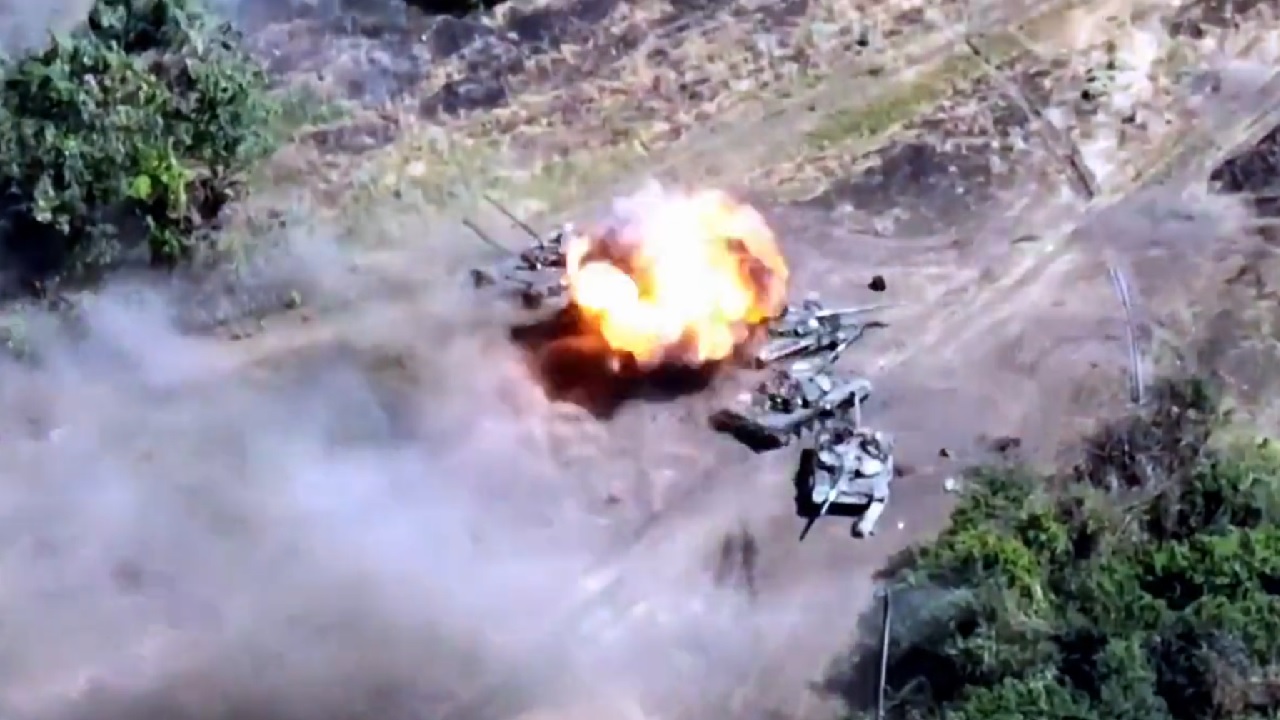Iran’s army ground forces commander this week revealed that Tehran is ready to export military materials, the Young Journalists Club reported via Reuters. While Heydari did not specify the type of weaponry the regime is ready to sell, the White House recently said that Tehran might export armed drones to Moscow.
The state-run Tasnim News Agency recently detailed the regime’s export ambitions. According to Tasnim, an Iranian brigadier general introduced plans to establish five new drone-focused military units. Referring to drones acquired by the Iranian army’s “Drone Base 313,” the general emphasized that, “Efforts are underway to extend the range and increase the accuracy of weapons.” Over the years, the regime has invested substantial resources into bolstering its air defense capabilities. The production of armed unmanned aerial vehicles and surveillance drones has remained a top priority.
Iran’s Domestic Drones
In 2021, Tehran revealed advanced, indigenously made drones during a large-scale military exercise called Zolfaqar 1400, off the Sea of Oman. During these drills, Iran’s army showcased its series of surface-to-surface weapons systems, including the Nasr, Ghader and Ghadir anti-ship cruise missiles. The Ghader missile has been described by several Iranian officials as the most powerful and precise missile Iran has ever produced. While the missile is technically a domestic product, it is largely derived from two of the regime’s older missiles, both of which are copies of Chinese prototypes. The Ghader is essentially an upgraded variant of the Nasr and Nor missiles. The Ghader remains the premiere missile in use by the Iranian navy. Its high-precision navigation system, digital autopilot system, and advanced radar system make the Ghader a solid drone.
Iran’s Nasr-1 short-range anti-ship missile also sports some enhanced features. The missile is capable of evading radar and can be deployed from land or sea. Similar to the Ghader’s origins, the Nasr-1 is largely believed to be a replica of the Chinese C-704 short-range missile. According to The Defense Post, the Ghadir missile is capable of hitting surface targets at a distance of over 180 miles.
The Islamic Revolutionary Guard Corps’ prioritization of advanced drone production boosts the regime’s regional operations. Tehran supplies its proxies throughout the Middle East with armed UAVs to project power and threaten its adversaries. While Iranian-aligned groups operate in Yemen, Syria, Lebanon, and Gaza, its Iraq-based affiliates probably use weaponized drones the most. Last year, Iraqi Prime Minister Mustafa al-Kadhimi survived a drone attack targeting his home. The attack was carried out by umbrella groups of Iraq’s Popular Mobilization Forces, who are responsible for dozens of other rocket and drone attacks in the country.
A Logical Decision
Given Iran’s frequent use of drones in recent years, its intent to export these weapons makes sense. Last week, the Biden administration announced that Tehran is planning on selling hundreds of armed UAVs to Russia. While Russian-Iranian military cooperation extends back to the 1979 Iranian Revolution, their bond has grown stronger because of their abysmal positions in the international community. Iran’s regime has carried out malign activity throughout the Middle East and has ramped up its nuclear-materials production, while the Kremlin continues its invasion of Ukraine. These actions have left them isolated and sanctioned by the rest of the world.
U.S. National Security Adviser Jake Sullivan said that satellite imagery shows a Russian delegation shared an airfield with a fleet of Iranian drones this month. In response, Iran’s Foreign Minister stated that, “We have various types of collaboration with Russia, including in the defense sector, but we won’t help either of the sides involved in this war because we believe that it needs to be stopped.” Yet these remarks were soon followed by the report that Iran is indeed ready to export military equipment and weapons.
As Tehran remains isolated, the regime will look outward for economic and strategic partners. Despite Iran’s claims that it will not directly support the Kremlin’s war against Ukraine, armed UAVs and surveillance drones may become the first of many exports to Moscow.
Maya Carlin is a Middle East Defense Editor with 19FortyFive. She is also an analyst with the Center for Security Policy and a former Anna Sobol Levy Fellow at IDC Herzliya in Israel. She has by-lines in many publications, including The National Interest, Jerusalem Post, and Times of Israel.

